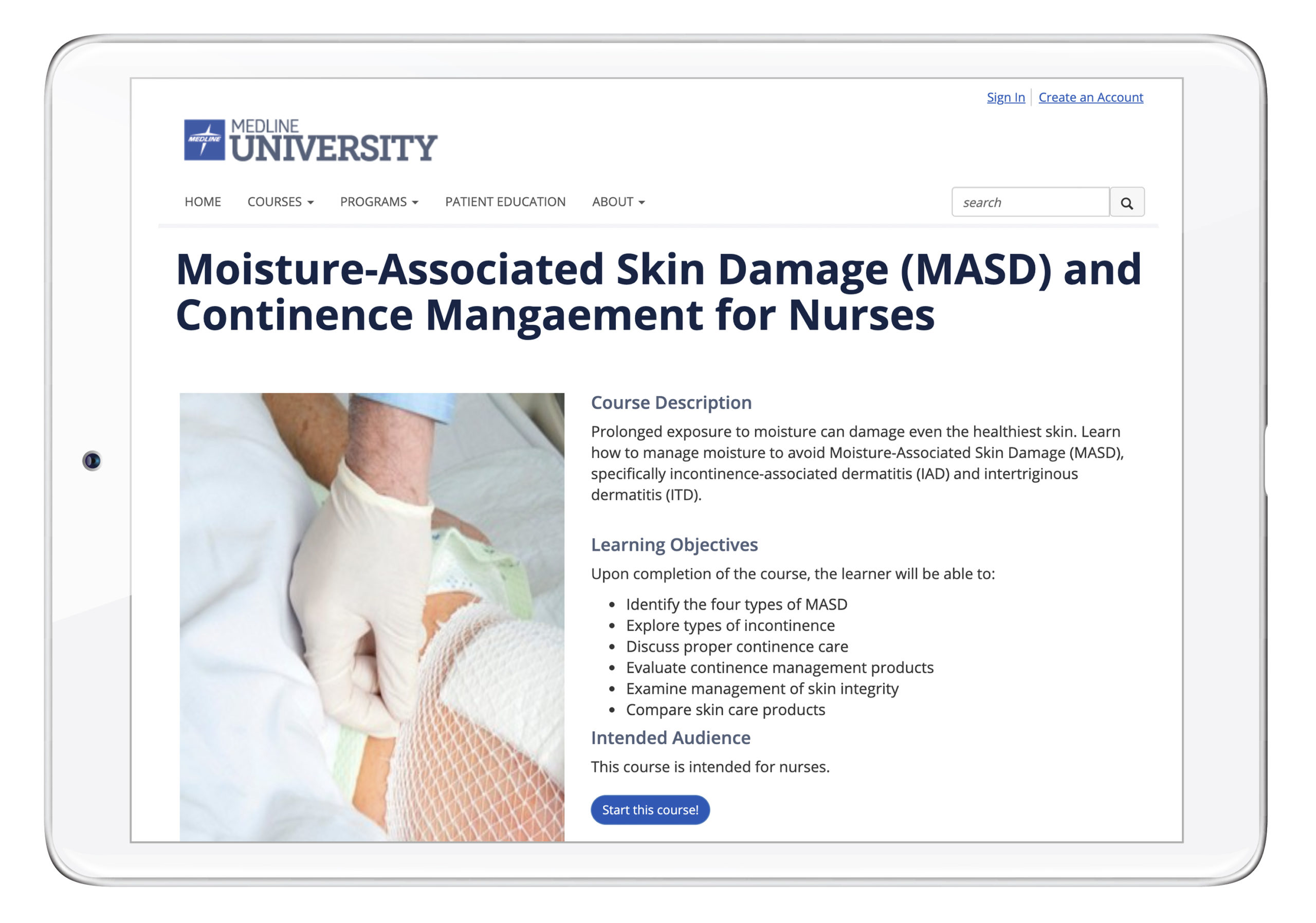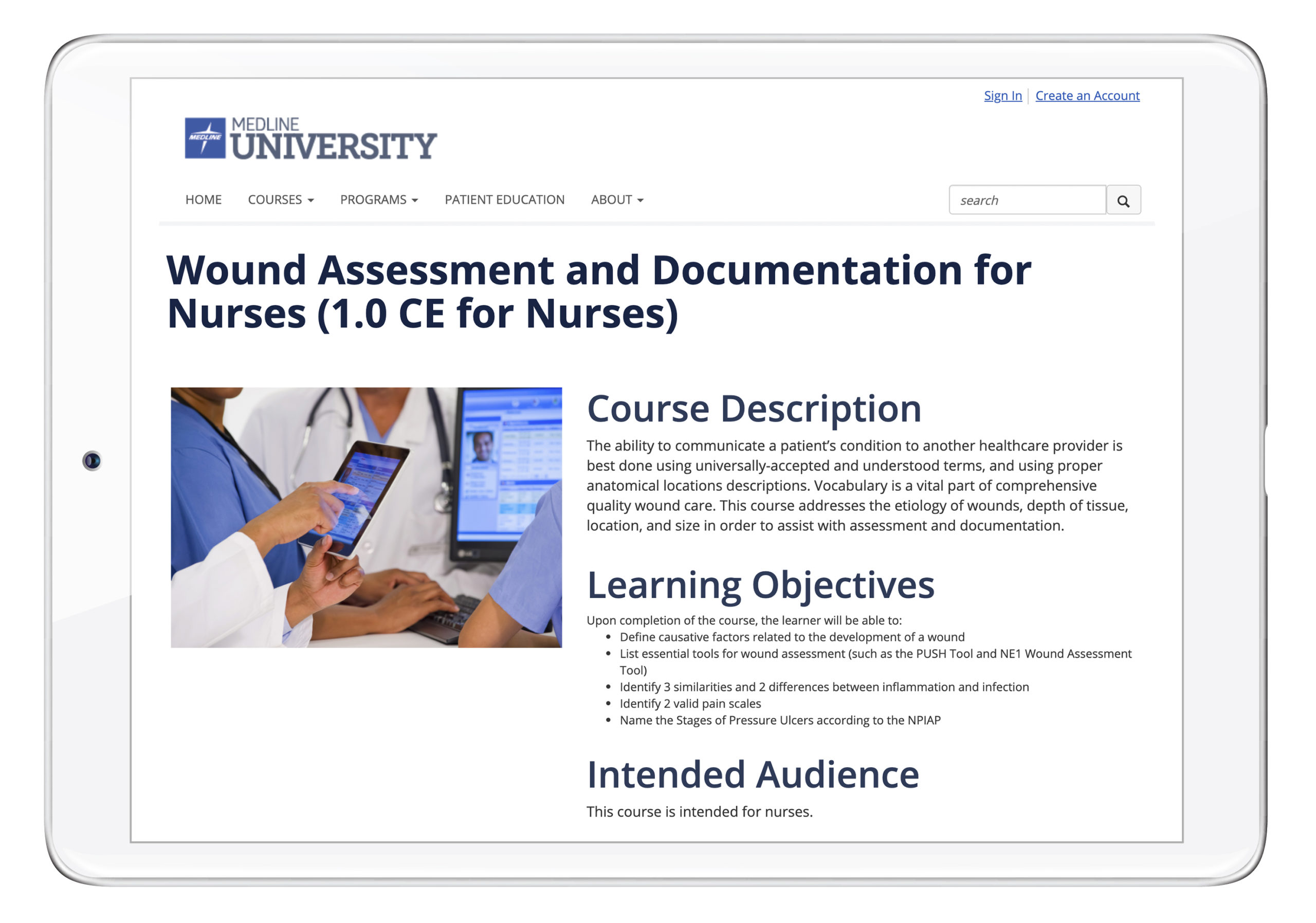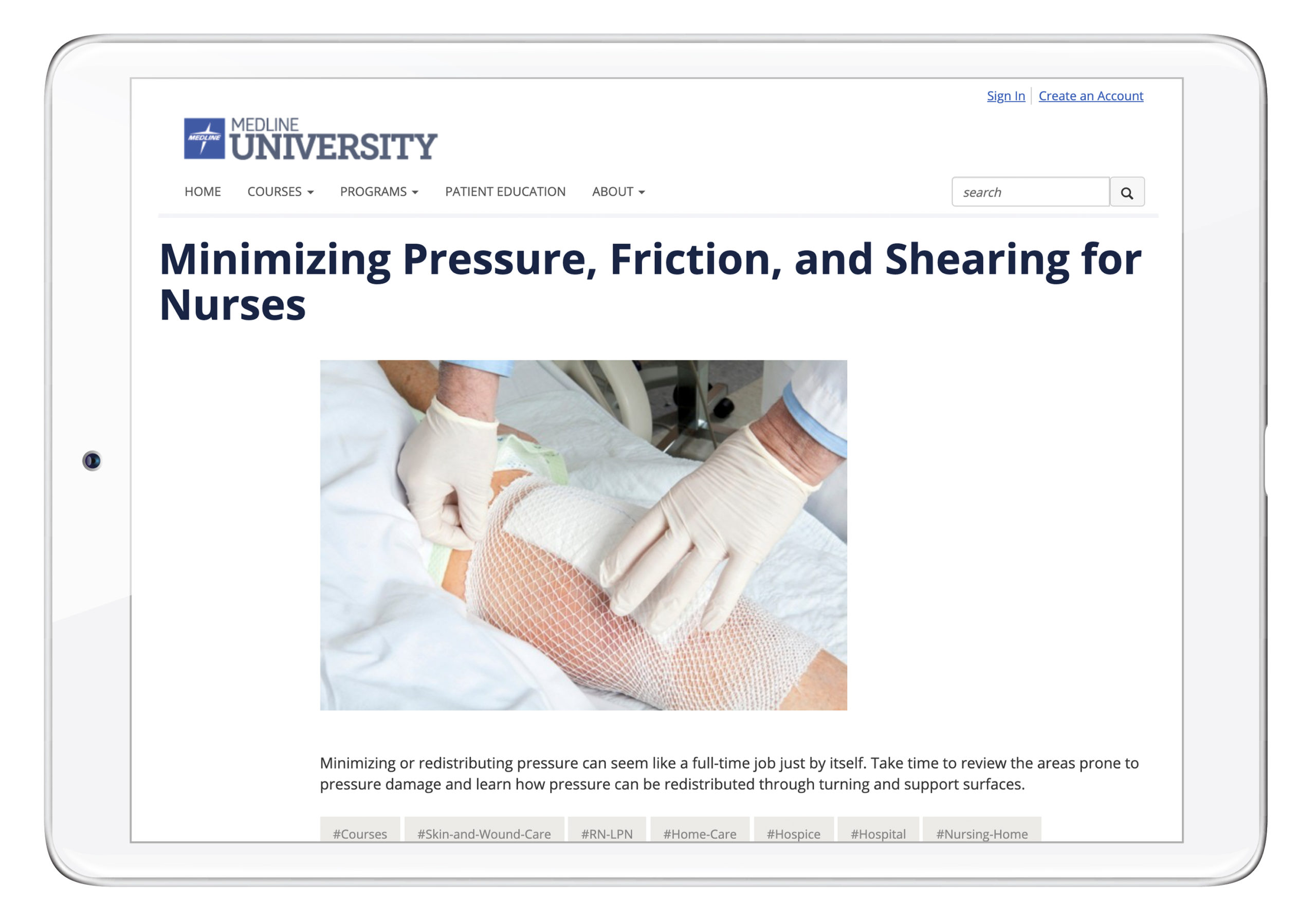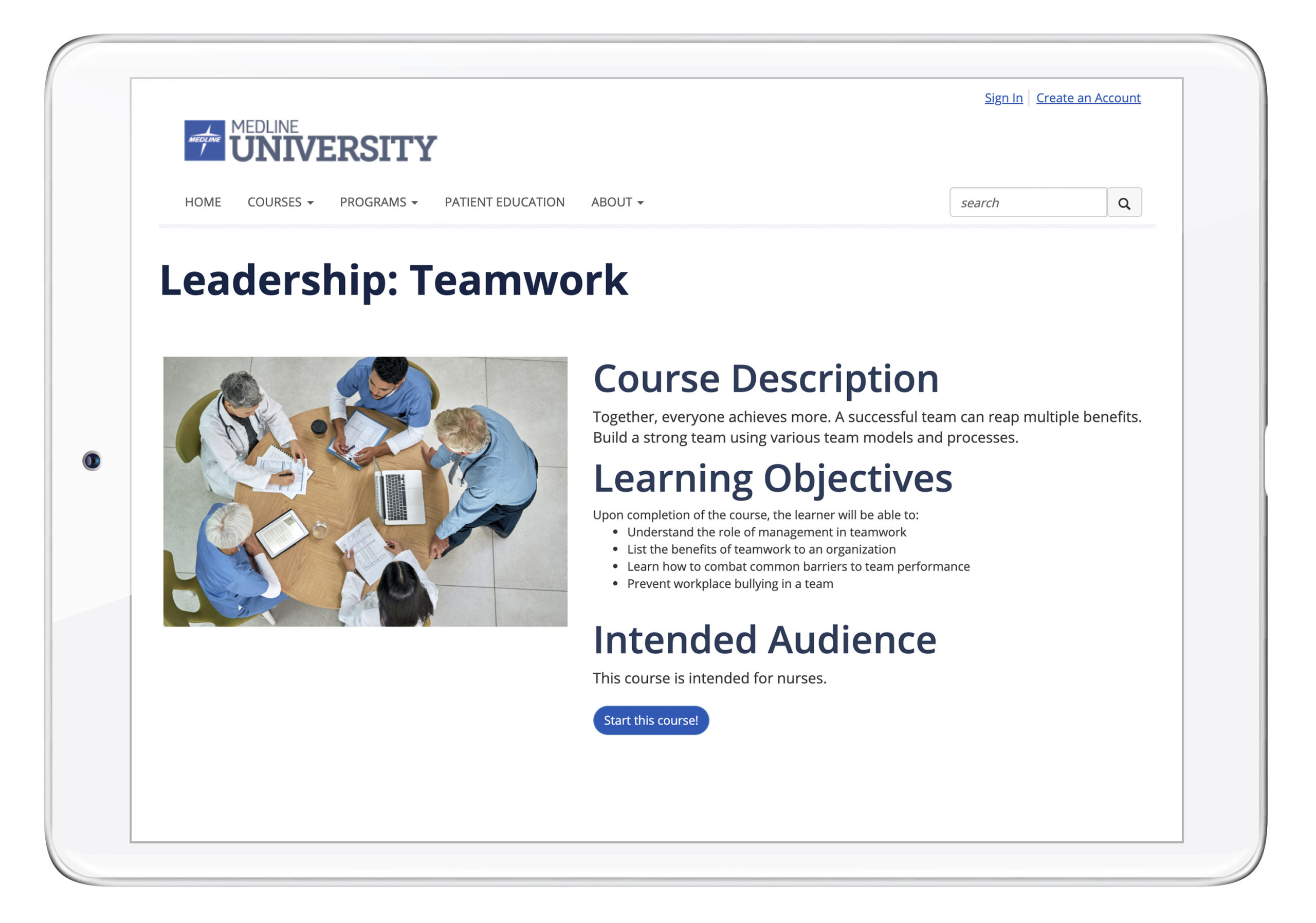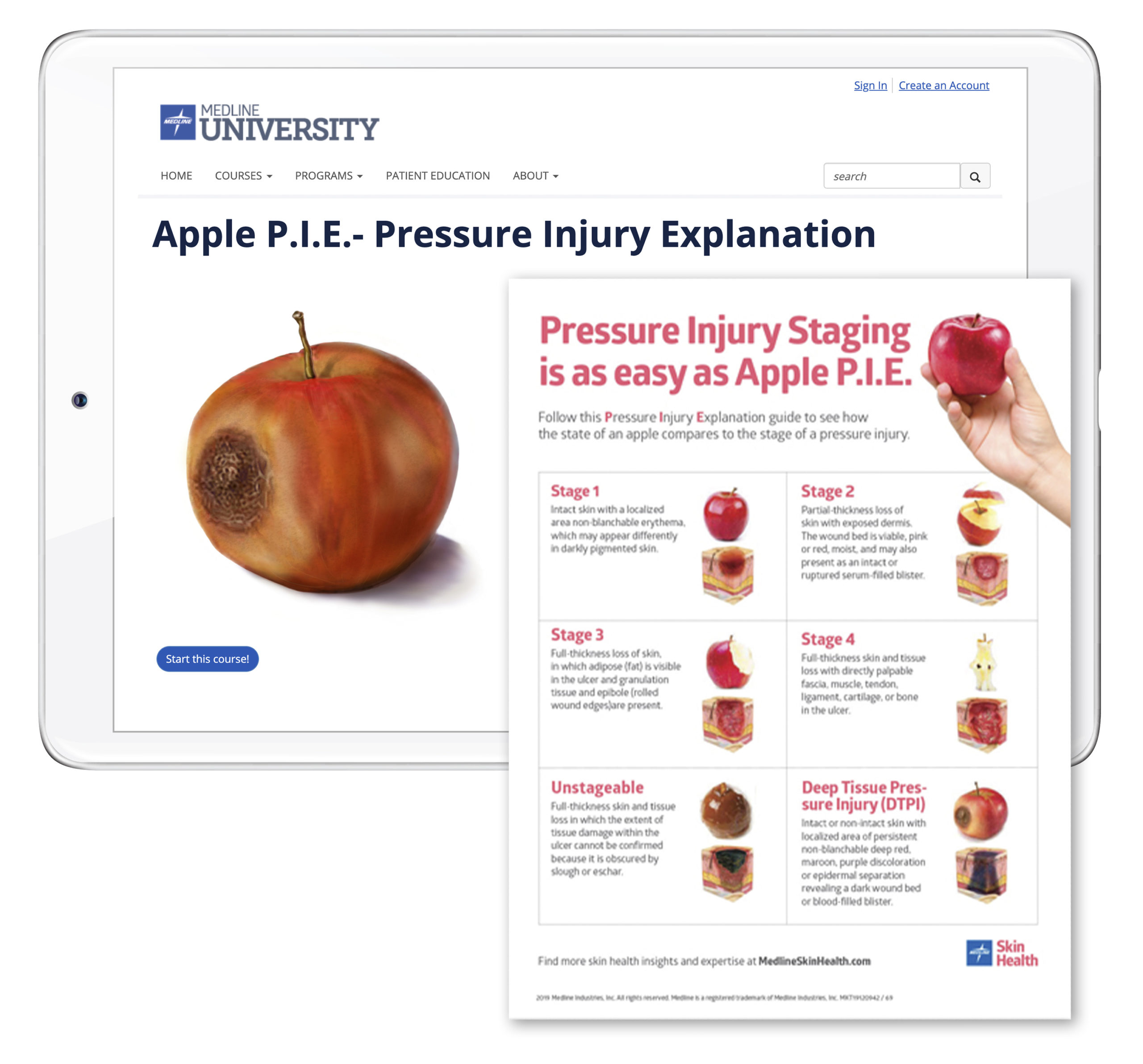No-cost evidence-based continuing education for nurses
Head back to class to stay up-to-date on skin and wound care.
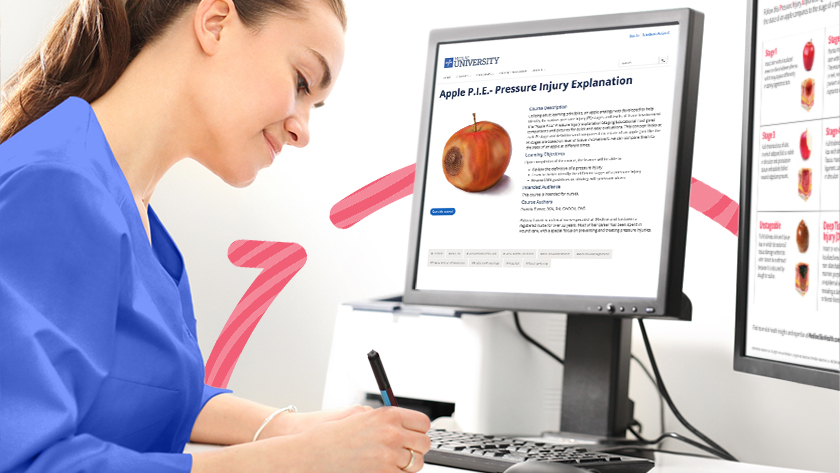
There are lots of compelling reasons to further your skin and wound care education: to fulfill continuing education unit requirements, to advance your career or simply to review an important topic.
Here’s another motivation: more than 200 free continuing education courses online at Medline University—created for clinicians by clinicians.
Address gaps in skin health practice
Evidence-based best practices for skin and wound care often change with new research and innovations in areas such as pressure injuries, venous stasis and moisture-associated skin damage.
“Learning should never cease for nurses, as healthcare is constantly evolving and improving through advancements in science and technology. It is through education that we provide evidence-based care and continue to improve patient outcomes,” says Kristin White, RN, BSN, CWON, Medline Clinical Education Specialist, Skin Health-Acute Care.
That’s why Medline’s dedicated team of clinicians has developed targeted skin health courses, webinars and resources.
“A good continuing education class updates you and enhances your knowledge of a topic you have learned previously,” notes Patricia Turner, BSN, RN, CWOCN, CWS, Medline Director of Clinical Resources, Skin Health-Acute Care.

“It is through education that we provide evidence-based care and continue to improve patient outcomes.”
— Kristin White, RN, BSN, CWON, Medline Clinical Education Specialist Skin Health-Acute Care
“Continuing education is important for nurses to stay current in the latest advances in their fields, but also gives the opportunity to learn from other nursing areas,” White adds.
Medline University courses help you stay on top of important guidelines and standards of practice so you can provide the best care for your patients. Medline Clinical Education Specialist Katie James, BA, RN, CWCN, sums it up: “Taking continuing ed courses keeps me focused and on my game.”
Check out 5 of the most popular skin health courses
1 | Moisture-Associated Skin Damage (MASD) and Continence Management for Nurses and a companion course for nursing assistants. These courses focus on how to identify and care for MASD.
2 | Wound Assessment and Documentation for Nurses Pick up one CE credit unit when you explore the etiology of wounds, depth of tissue, location and size in order to assist with assessment and documentation.
3 | Minimizing Pressure, Friction and Shearing for Nurses Review which areas of the body are prone to pressure injuries and how to reduce risk by offloading, repositioning and using the right support surfaces.

4 | Leadership: Teamwork Your colleagues have different backgrounds, experience levels and interests. Learn to pull all your strengths together to achieve better results.
5 | Apple P.I.E.- Pressure Injury Explanation The analogy of an apple provides the foundation for this simple way to recognize each stage of a pressure injury so you know the right intervention and treatment strategies.
To help your team more easily identify pressure injuries, download, print and display our Apple P.I.E. poster, developed by Patricia Turner, BSN, RN, CWOCN, CWS, Medline Director of Clinical Resources Skin Health—Acute Care. Download the poster
Key takeaway
Continuing education has many benefits, especially improving care for your patients. Medline University helps make it easy to find classes that are specifically targeted to wound care nurses and nursing assistants.
Find more insights on nurse education:
Wound care hot topics: 6 key takeaways from SAWC Spring 2021
Wound care education solutions: Creative ways to make it easier for nurses to do the right thing
Download 3 wound-specific handouts to help increase patient education and improve outcomes
Created by clinicians for clinicians, our Skin Health Champion Program helps frontline staff deliver better outcomes
